TSX gains after CPI shows US inflation rose 3%
Introduction & Market Context
Ginkgo Bioworks Holdings (NYSE:DNA) presented its Q1 2025 financial results and business update on May 6, highlighting 27% revenue growth while continuing aggressive cost-cutting measures. Despite the positive financial performance, the stock fell 6.79% to $6.92 following the announcement, though it recovered slightly in aftermarket trading, rising 2.33% to $6.60.
The synthetic biology company, which aims to "make biology easier to engineer," is navigating a challenging environment for biotech companies while working toward its goal of achieving adjusted EBITDA breakeven by the end of 2026. The company’s stock has fallen over 83% in the past year, according to market data, despite recent operational improvements.
Quarterly Performance Highlights
Ginkgo reported total revenue of $48 million for Q1 2025, a 27% increase compared to Q1 2024. This growth was primarily driven by the Cell Engineering segment, which saw revenue rise 37% year-over-year to $38 million, including $7.5 million in non-cash deferred revenue from BiomEdit.
As shown in the following chart of Cell Engineering revenue and program growth:
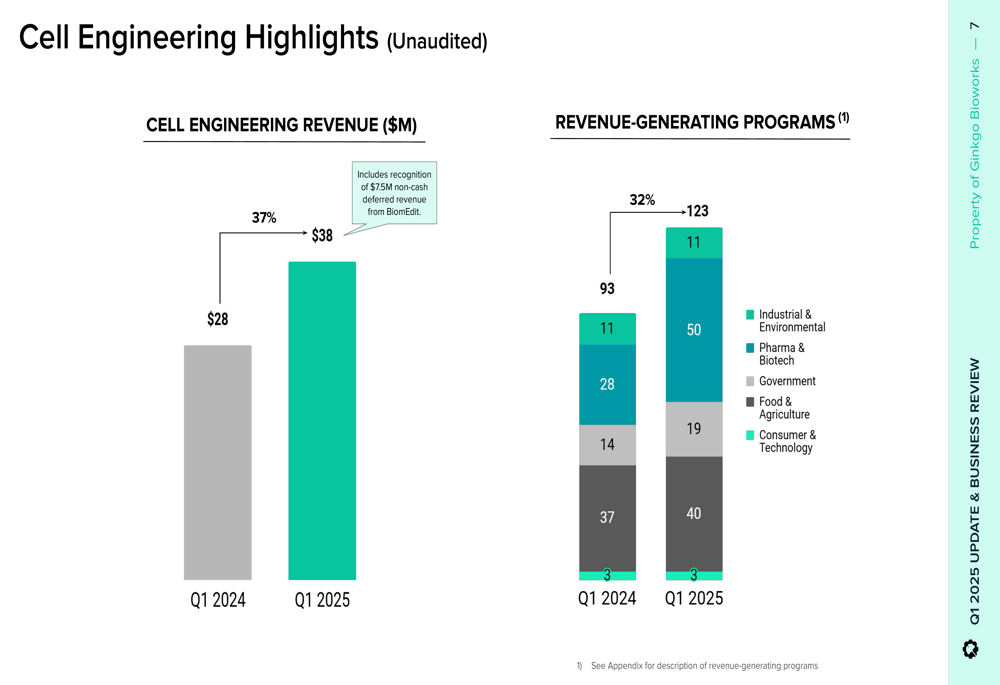
The company’s revenue-generating programs increased from 93 in Q1 2024 to more than 123 in Q1 2025, spanning industries including industrial & environmental, pharma & biotech, government, food & agriculture, and consumer & technology.
Biosecurity revenue remained flat at $10 million compared to the prior year, though this segment has seen significant declines from its peak during the pandemic. The company’s biosecurity operations maintain a global footprint with 11 key international airports and 45 collection nodes.
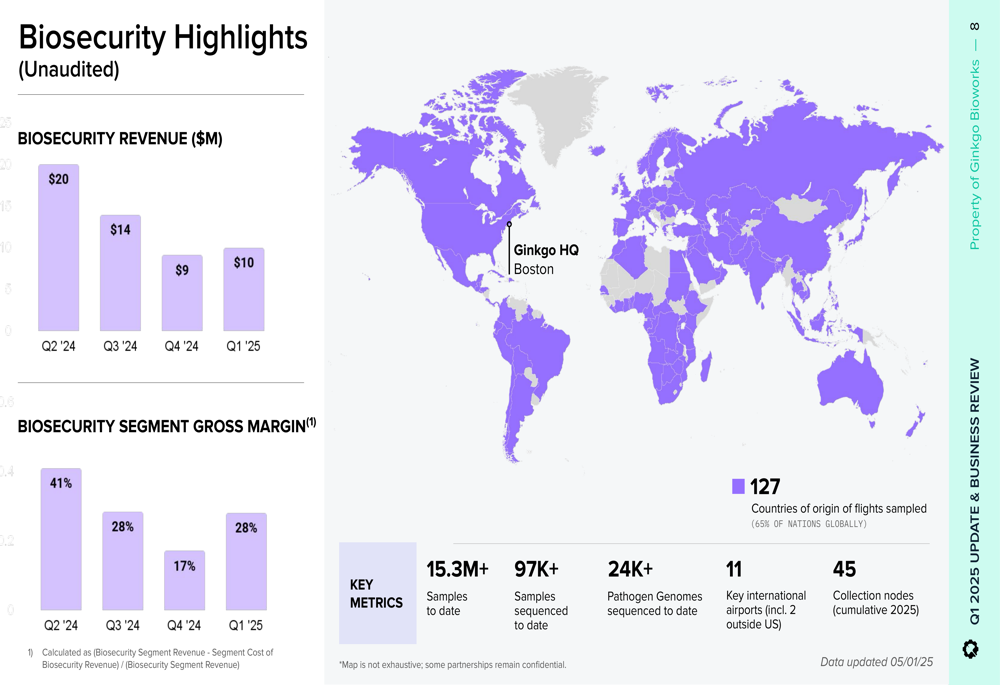
Ginkgo has made substantial progress in reducing expenses, achieving $205 million in annual run-rate cost savings from Q1 2024 to Q1 2025. This has resulted in a 44% reduction in quarterly cash burn, from $104 million in Q1 2024 to $58 million in Q1 2025. The company maintains a strong financial position with $517 million in cash, cash equivalents, and marketable securities, with no bank debt.
The following chart illustrates the company’s cost-cutting progress and improving financial metrics:
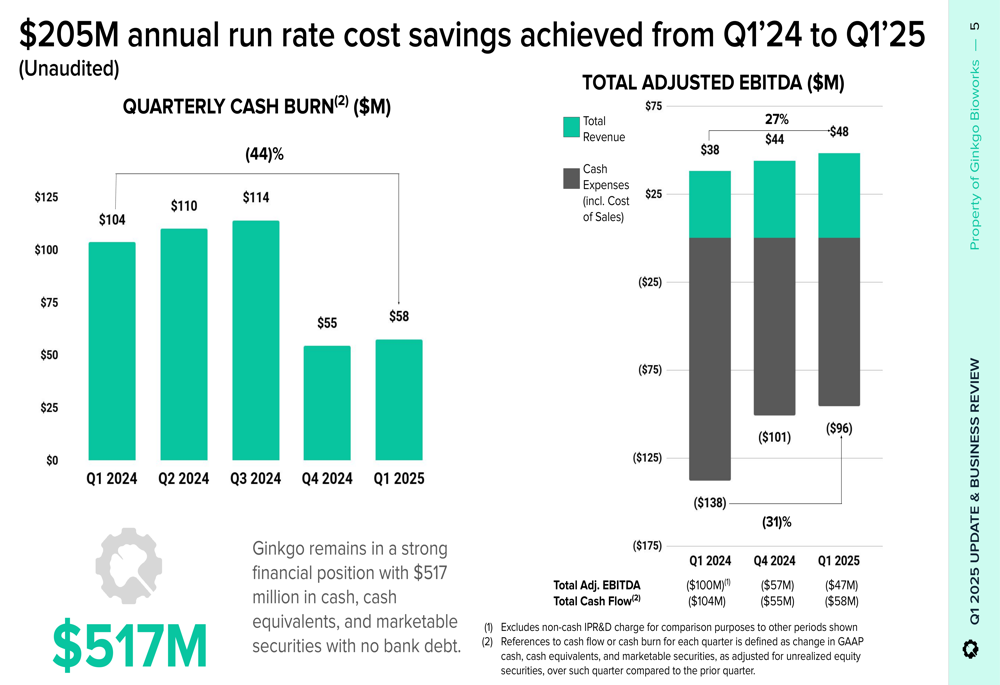
Total (EPA:TTEF) adjusted EBITDA improved significantly to $(47) million from $(117) million in the prior year period, reflecting both revenue growth and expense reductions. The company provided a breakdown of adjusted EBITDA by segment:

Strategic Initiatives
Ginkgo is expanding beyond its core Solutions business (service fees plus royalties/milestones) to develop Tools offerings (service fees only) that provide customers with direct access to the company’s platform capabilities. This strategic shift aims to diversify revenue streams and accelerate sales cycles.
The company’s CEO, Jason Kelly, emphasized this complementary approach in the presentation:
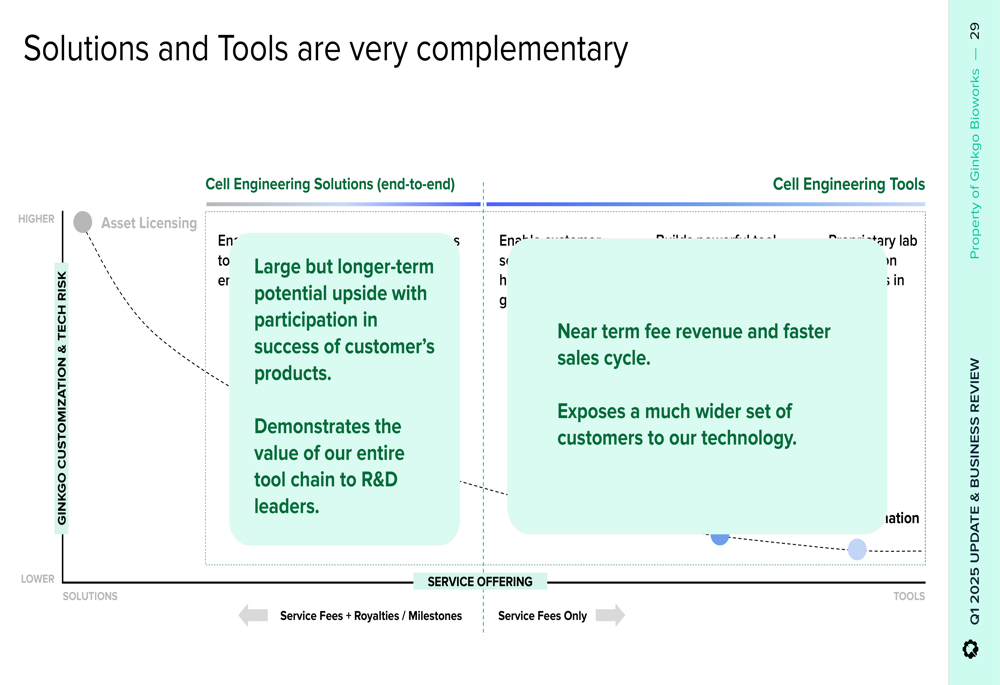
A key component of Ginkgo’s strategy involves positioning itself as a trusted R&D service provider to the US government. The company highlighted 28 US government projects across cell engineering and biosecurity, with approximately $180 million in contracted backlog and unfunded potential backlog.
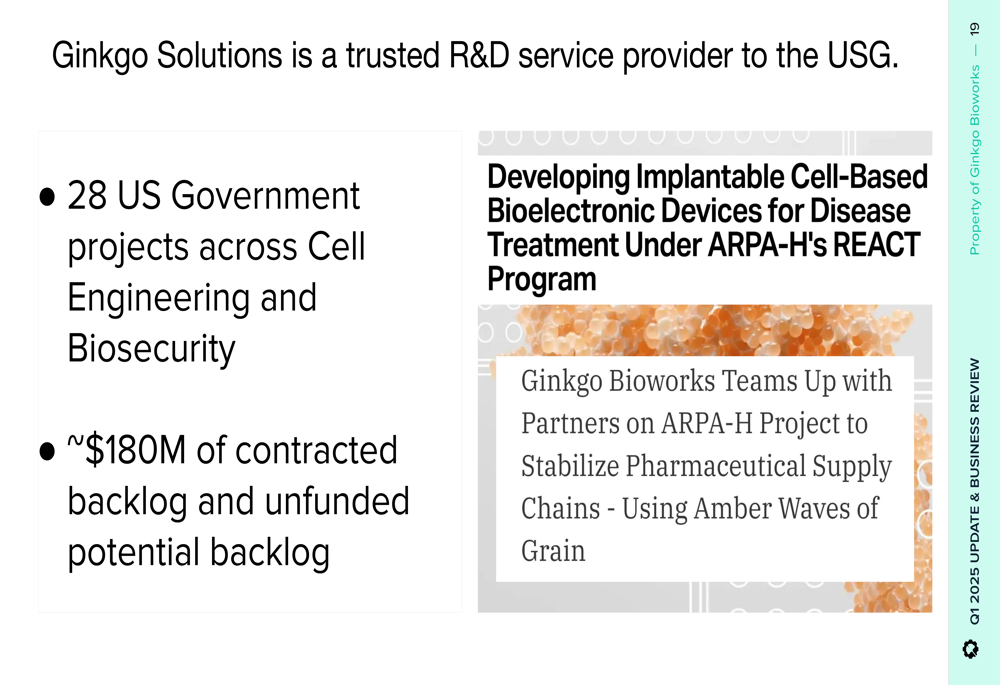
Ginkgo’s biosecurity initiatives include a network of "biological radar stations" across various settings to enable early detection of potential threats:
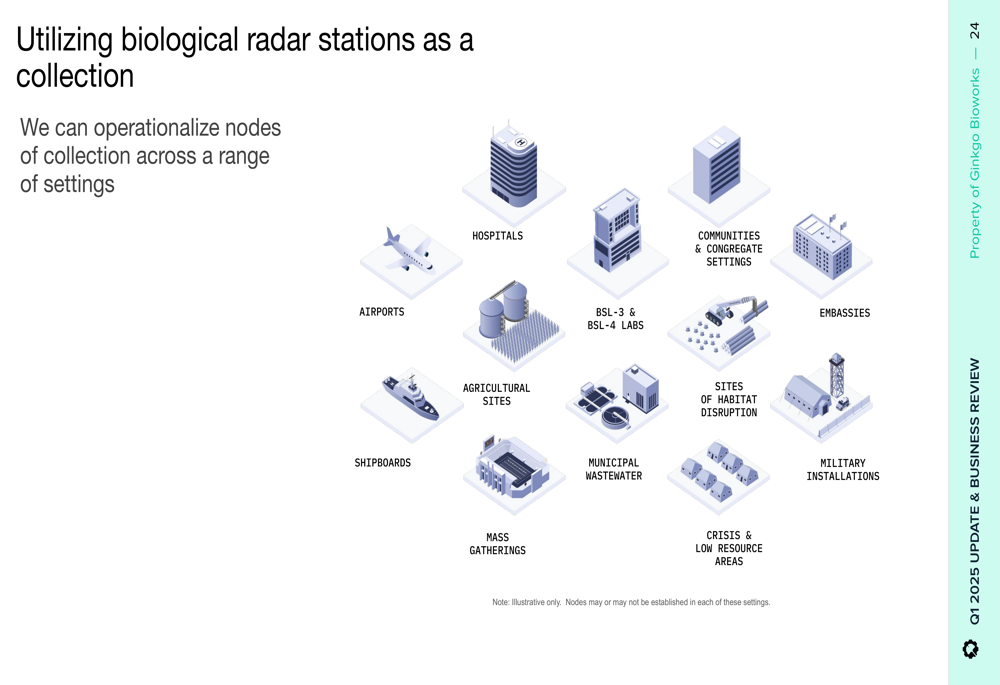
The company is also expanding its automation capabilities, which power both internal operations and customer offerings. Ginkgo’s Reconfigurable Automation Carts (RACs) enable large-scale data generation to support AI applications in biotechnology:
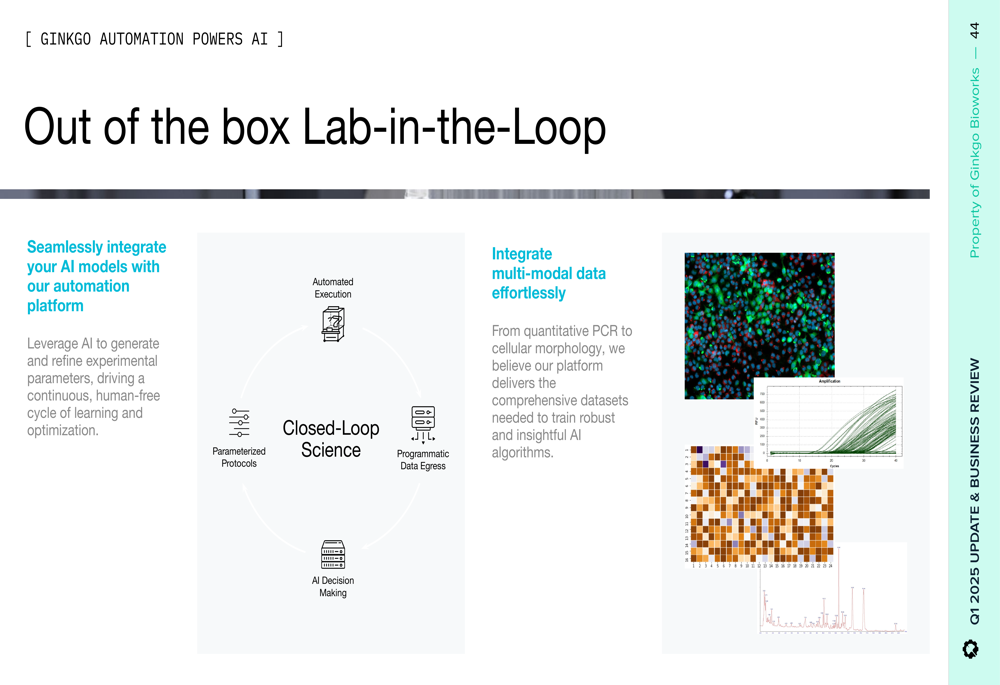
Recent partnerships with Aura Genetics and Octant demonstrate the commercial potential of Ginkgo’s automation technology. The Octant partnership reportedly delivered a 7x throughput increase and 88% reduction in hands-on time for the customer.
Forward-Looking Statements
Ginkgo provided revenue guidance of $167-187 million for full-year 2025, including $117-137 million from Cell Engineering and at least $50 million from Biosecurity. The company aims to achieve $250 million in annualized run-rate cost savings by the end of Q3 2025.
The company’s path to adjusted EBITDA breakeven by the end of 2026 is illustrated in the following chart:
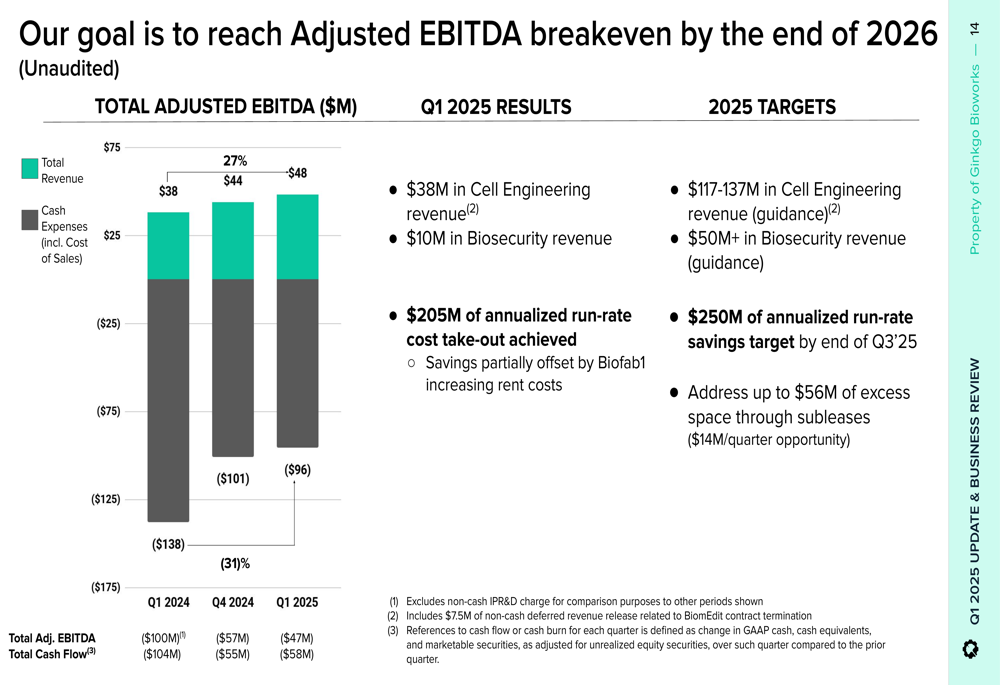
Management believes that biotechnology remains a critical emerging technology area in the US, citing government statements including one from the National Security Commission on Emerging Biotechnology that notes: "We stand at the edge of a new industrial revolution, one that depends on our ability to engineer biology."
While Ginkgo’s presentation emphasized growth opportunities and cost-cutting progress, investors should note the challenging market environment for biotech companies and the significant stock price decline over the past year. The company’s Altman Z-Score of -6.5, mentioned in recent analysis, suggests financial distress risks that weren’t directly addressed in the presentation.
The company’s strategic shift toward tools and automation, combined with its government partnerships, may provide new growth avenues, but execution will be critical as Ginkgo works toward profitability in the coming years.
Full presentation:
This article was generated with the support of AI and reviewed by an editor. For more information see our T&C.
